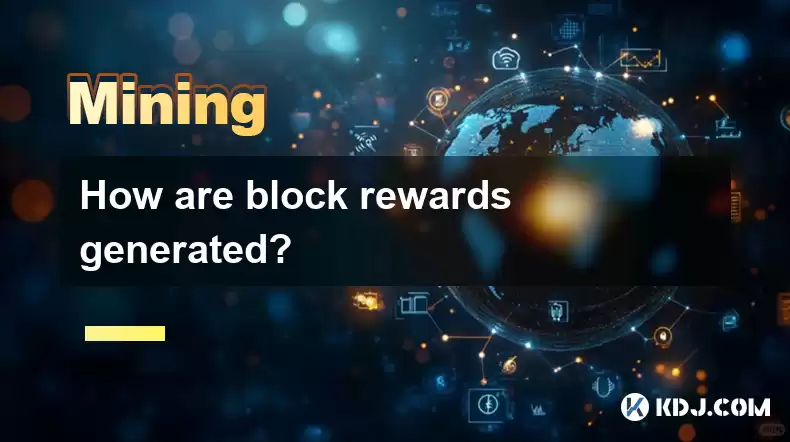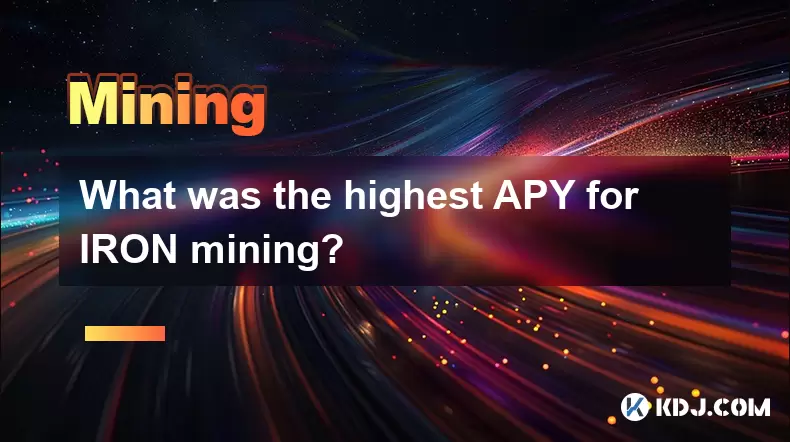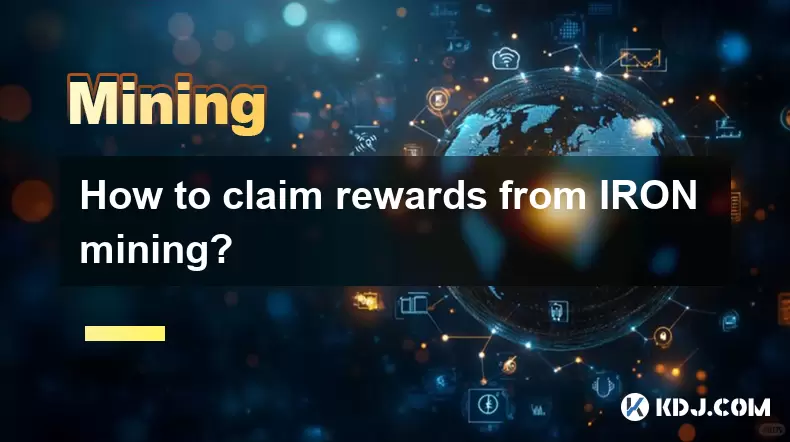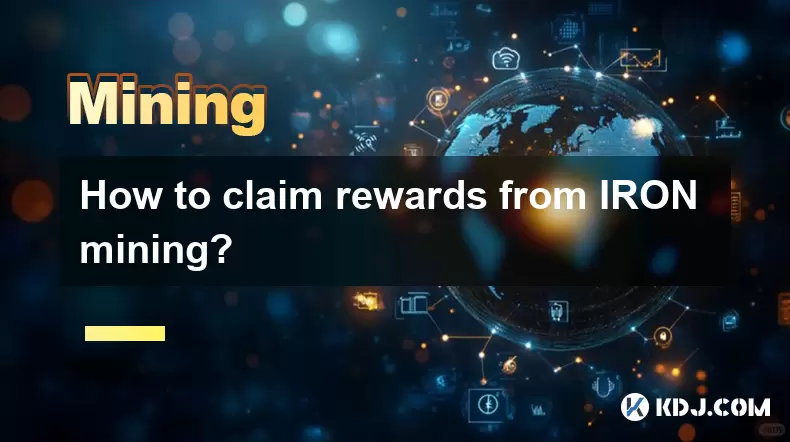-
 Bitcoin
Bitcoin $115000
0.12% -
 Ethereum
Ethereum $3701
4.50% -
 XRP
XRP $3.081
2.99% -
 Tether USDt
Tether USDt $0.0000
-0.01% -
 BNB
BNB $767.9
1.45% -
 Solana
Solana $169.5
3.13% -
 USDC
USDC $0.9999
0.01% -
 Dogecoin
Dogecoin $0.2106
4.30% -
 TRON
TRON $0.3334
1.62% -
 Cardano
Cardano $0.7564
2.54% -
 Stellar
Stellar $0.4165
0.76% -
 Hyperliquid
Hyperliquid $38.75
0.25% -
 Sui
Sui $3.593
3.00% -
 Chainlink
Chainlink $17.08
3.59% -
 Bitcoin Cash
Bitcoin Cash $573.6
4.35% -
 Hedera
Hedera $0.2508
-0.84% -
 Avalanche
Avalanche $23.07
6.46% -
 Ethena USDe
Ethena USDe $1.001
-0.02% -
 Litecoin
Litecoin $120.8
8.17% -
 UNUS SED LEO
UNUS SED LEO $8.943
-0.32% -
 Toncoin
Toncoin $3.400
-5.60% -
 Shiba Inu
Shiba Inu $0.00001255
1.54% -
 Uniswap
Uniswap $9.908
6.32% -
 Polkadot
Polkadot $3.718
2.10% -
 Monero
Monero $303.0
-0.74% -
 Dai
Dai $0.9999
-0.02% -
 Bitget Token
Bitget Token $4.392
0.91% -
 Cronos
Cronos $0.1403
6.31% -
 Pepe
Pepe $0.00001076
1.13% -
 Aave
Aave $267.2
1.80%
How are block rewards generated?
Block rewards incentivize miners and validators in blockchain networks like Bitcoin and Ethereum, impacting security and total cryptocurrency supply.
Apr 09, 2025 at 04:49 pm

Introduction to Block Rewards
Block rewards are a fundamental component of many blockchain networks, serving as an incentive mechanism for miners or validators who contribute to the security and operation of the network. These rewards are typically generated through a process that involves solving complex mathematical problems or validating transactions. Understanding how block rewards are generated is crucial for anyone interested in the inner workings of cryptocurrencies like Bitcoin or Ethereum.
The Role of Mining in Block Reward Generation
In networks that use a Proof of Work (PoW) consensus mechanism, such as Bitcoin, mining plays a central role in generating block rewards. Miners compete to solve cryptographic puzzles, and the first miner to solve the puzzle gets to add a new block to the blockchain. This process is known as mining a block. When a miner successfully mines a block, they are rewarded with a certain number of newly minted coins, which constitutes the block reward.
The Process of Mining a Block
To understand how block rewards are generated through mining, it's important to delve into the specifics of the mining process. Miners use powerful computers to perform hash functions on a block of transactions. The goal is to find a hash that meets the network's difficulty target, which is adjusted periodically to maintain a consistent block time.
- Gather transactions: Miners collect a set of unconfirmed transactions from the network's memory pool.
- Create a block: These transactions are bundled into a block, along with a reference to the previous block's hash.
- Add a nonce: Miners include a nonce (number used once) in the block header, which they can change to produce different hash outputs.
- Hash the block: The miner's computer performs a hash function on the block header, which includes the nonce.
- Check the hash: If the resulting hash meets the network's difficulty target, the block is considered valid and is added to the blockchain.
- Claim the reward: The miner who successfully mined the block is awarded the block reward, which is a predetermined number of coins.
Block Reward Distribution in Proof of Stake Systems
In contrast to PoW systems, Proof of Stake (PoS) networks like Ethereum 2.0 generate block rewards through a different mechanism. Instead of mining, validators are chosen to create new blocks based on the number of coins they hold and are willing to "stake" as collateral. When a validator is selected to create a block, they are rewarded with a block reward, which is typically a combination of newly minted coins and transaction fees.
The Calculation of Block Rewards
The calculation of block rewards varies depending on the specific cryptocurrency and its protocol. For Bitcoin, the block reward is halved approximately every four years, a process known as halving. Initially set at 50 BTC per block, the reward has been reduced over time and is currently 6.25 BTC per block. This halving mechanism is designed to control the total supply of Bitcoin and mimic the scarcity of precious metals like gold.
In Ethereum, the block reward before the transition to PoS included both a fixed amount of newly minted ETH and the transaction fees included in the block. With the shift to PoS, the block reward structure has changed, and validators now receive a combination of newly minted ETH and transaction fees, with the exact amount determined by the network's inflation rate and the total amount of ETH staked.
The Impact of Transaction Fees on Block Rewards
Transaction fees play a significant role in the overall block reward structure. In both PoW and PoS systems, miners or validators are incentivized to include transactions with higher fees in their blocks, as these fees contribute to their total reward. For Bitcoin, as the block reward from newly minted coins decreases over time due to halving, transaction fees are expected to become a more significant portion of the total reward.
In Ethereum, the transition to PoS has introduced a new fee structure known as EIP-1559, which burns a portion of the transaction fees, effectively reducing the net issuance of ETH and potentially increasing its value over time. Validators still receive a portion of the transaction fees as part of their block reward, but the dynamics of fee distribution have changed significantly.
The Security Implications of Block Rewards
The generation of block rewards is not just about incentivizing participation; it also has significant security implications for the network. In PoW systems, the energy and computational resources required to mine blocks act as a deterrent against malicious actors attempting to launch a 51% attack, where they control the majority of the network's mining power. The block reward serves as a financial incentive for miners to act honestly and maintain the integrity of the blockchain.
In PoS systems, the requirement for validators to stake their own coins as collateral serves a similar purpose. If a validator attempts to act maliciously, they risk losing their staked coins, which provides a strong economic disincentive against such behavior. The block reward in PoS systems thus not only incentivizes participation but also reinforces the security of the network.
Frequently Asked Questions
Q: How does the block reward affect the total supply of a cryptocurrency?
A: The block reward directly impacts the total supply of a cryptocurrency by determining the rate at which new coins are minted. For example, in Bitcoin, the block reward is designed to decrease over time through halving events, which slows the rate of new coin issuance and contributes to the cryptocurrency's scarcity.
Q: Can block rewards be changed after a cryptocurrency is launched?
A: Yes, block rewards can be changed through a consensus mechanism, typically involving a hard fork or a protocol upgrade. For instance, Ethereum's transition from PoW to PoS involved a significant change in the block reward structure, which was implemented through a series of upgrades.
Q: How do block rewards influence the behavior of miners and validators?
A: Block rewards serve as a primary incentive for miners and validators to participate in the network. Higher block rewards can attract more participants, increasing the network's security and decentralization. Conversely, lower block rewards may lead to reduced participation, potentially affecting the network's security and efficiency.
Q: Are there any cryptocurrencies that do not use block rewards?
A: Yes, some cryptocurrencies, such as Nano, do not use block rewards. Instead, they rely solely on transaction fees to incentivize network participation. These systems often use different consensus mechanisms, such as Open Representative Voting (ORV) in the case of Nano.
Disclaimer:info@kdj.com
The information provided is not trading advice. kdj.com does not assume any responsibility for any investments made based on the information provided in this article. Cryptocurrencies are highly volatile and it is highly recommended that you invest with caution after thorough research!
If you believe that the content used on this website infringes your copyright, please contact us immediately (info@kdj.com) and we will delete it promptly.
- Cryptocurrency, Altcoins, and Profit Potential: Navigating the Wild West
- 2025-08-04 14:50:11
- Blue Gold & Crypto: Investing Disruption in Precious Metals
- 2025-08-04 14:30:11
- Japan, Metaplanet, and Bitcoin Acquisition: A New Era of Corporate Treasury?
- 2025-08-04 14:30:11
- Coinbase's Buy Rating & Bitcoin's Bold Future: A Canaccord Genuity Perspective
- 2025-08-04 14:50:11
- Coinbase's Buy Rating Maintained by Rosenblatt Securities: A Deep Dive
- 2025-08-04 14:55:11
- Cryptos, Strategic Choices, High Returns: Navigating the Meme Coin Mania
- 2025-08-04 14:55:11
Related knowledge

What was the highest APY for IRON mining?
Jul 23,2025 at 05:14am
Understanding IRON Token and Its Mining MechanismThe IRON token is a stablecoin that operates within the Iron Finance ecosystem, primarily on blockcha...

What is impermanent loss in IRON pools?
Jul 23,2025 at 09:00am
Understanding Impermanent Loss in the Context of IRON PoolsImpermanent loss is a phenomenon that affects liquidity providers in decentralized finance ...

How to claim rewards from IRON mining?
Jul 23,2025 at 02:21pm
Understanding IRON Mining and Reward MechanismsIRON Finance operated as a decentralized finance (DeFi) protocol on the Polygon and Binance Smart Chain...

How to claim rewards from IRON mining?
Jul 29,2025 at 05:07am
Understanding IRON Mining and Reward MechanismIRON is a dual-token system designed to stabilize the value of a synthetic asset through a combination o...

IRON mining tutorial for beginners
Jul 27,2025 at 12:01am
What Is IRON and How Does It Work in the Cryptocurrency Ecosystem?IRON is a cryptocurrency token that operates on the Binance Smart Chain (BSC) and is...

How to calculate APY for IRON mining?
Jul 28,2025 at 09:49am
Understanding APY in the Context of IRON Token MiningWhen engaging in IRON token mining within decentralized finance (DeFi) platforms, Annual Percenta...

What was the highest APY for IRON mining?
Jul 23,2025 at 05:14am
Understanding IRON Token and Its Mining MechanismThe IRON token is a stablecoin that operates within the Iron Finance ecosystem, primarily on blockcha...

What is impermanent loss in IRON pools?
Jul 23,2025 at 09:00am
Understanding Impermanent Loss in the Context of IRON PoolsImpermanent loss is a phenomenon that affects liquidity providers in decentralized finance ...

How to claim rewards from IRON mining?
Jul 23,2025 at 02:21pm
Understanding IRON Mining and Reward MechanismsIRON Finance operated as a decentralized finance (DeFi) protocol on the Polygon and Binance Smart Chain...

How to claim rewards from IRON mining?
Jul 29,2025 at 05:07am
Understanding IRON Mining and Reward MechanismIRON is a dual-token system designed to stabilize the value of a synthetic asset through a combination o...

IRON mining tutorial for beginners
Jul 27,2025 at 12:01am
What Is IRON and How Does It Work in the Cryptocurrency Ecosystem?IRON is a cryptocurrency token that operates on the Binance Smart Chain (BSC) and is...

How to calculate APY for IRON mining?
Jul 28,2025 at 09:49am
Understanding APY in the Context of IRON Token MiningWhen engaging in IRON token mining within decentralized finance (DeFi) platforms, Annual Percenta...
See all articles

























































































